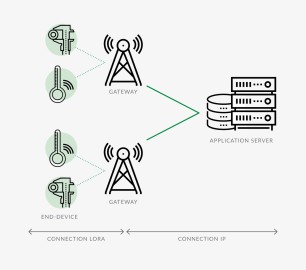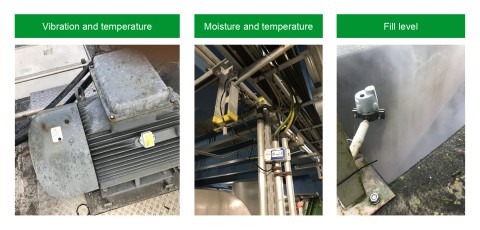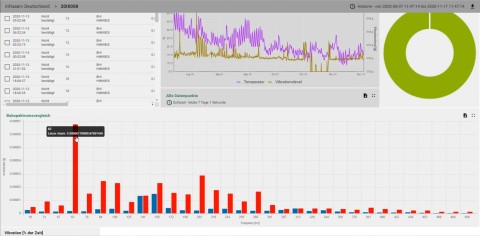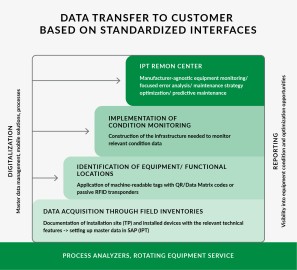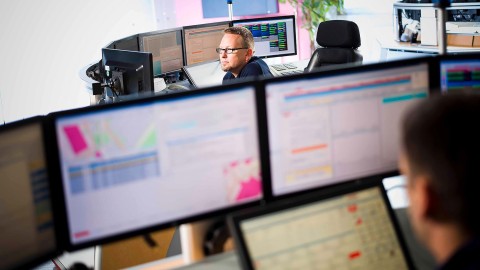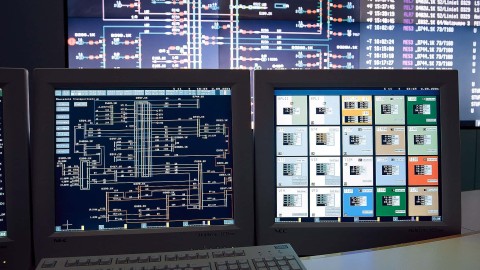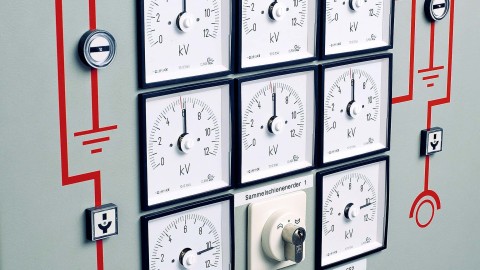Digitalization: an opportunity for optimized condition-based maintenance models
The digital transformation is progressing faster, with the result that large parts of industry and commerce are engaging more and more intensively with digitalisation. Although many technologies have been available for years, they are only gradually being used across the board. There is a growing awareness of how digitalisation in general and Industry 4.0 with the Internet of Things (IoT) in particular can make many processes more efficient, economical and sustainable. Digitalisation also offers many advantages for the maintenance of industrial plants.
Higher availability, lower maintenance cost, longer equipment lifecycles
Industrial plants and equipment are often maintained and serviced preventively in fixed intervals that are determined based on experience and general rules of thumb about component wear and service life. However, reactive and protective approaches such as preventive or breakdown maintenance are inefficient and highly unsustainable. Equipment still ends up breaking down between routine maintenance visits, which, if worse comes to worst, can unexpectedly shut down entire plants or production lines. And even if everything runs smoothly, preventive strategies can be expensive as some fully functional components are needlessly replaced.
Listening to equipment and zeroing in on problems
Digitalization can allow operators to constantly monitor the condition of their plant components: Strategically placed sensors can immediately detect even the tiniest deviations from normal operation. These deviations can then be analyzed. Changes in vibrations, sound patterns or other factors may indicate an upcoming component failure.
“Infraserv Höchst has its own task force dedicated to driving the adoption of IoT technologies. We began by setting up a LoRa network. Next, we installed 120 sensors to monitor vibrations in pumps, motors and blowers in various plants as one of our first use cases.”
Dirk-Harald Bestehorn, Infraserv Höchst
The LoRa network was built together with Infraserv’s Innovation Lab – an in-house organizational unit that carries out forward-looking projects with both internal and external customers and introduces employees to agile methods. It conducted workshops in close cooperation with the functional departments to work out customers’ needs and the minimum that the network needed to do before conducting a proof of concept to validate the feasibility of the project.
Condition-based maintenance offers clear benefits:
- Malfunctions can be selectively fixed before performance suffers or the equipment breaks down
- Required maintenance can be done at the exact time and place where it is needed
- Higher availability by avoiding unscheduled downtime
- Less costly and resource-intensive than preventive or breakdown maintenance approaches
- Longer equipment lifecycles enable more sustainable production processes and company strategies
How does condition-based maintenance work?
Condition-based maintenance makes full use of all the tools provided by digitalization:
- Sensors that collect operational data at sensitive points in plants and equipment and pass on the data for analysis
- The internet for communications between sensors, databases and users
- The cloud for secure, central data storage and analysis
- Fast digital data preparation and intuitive, user-friendly visualization based on various criteria
Equipment monitoring sensors can even be installed in highly inaccessible locations such as inside ventilation systems. It generally takes only one sensor per component to constantly and automatically collect all required data on the equipment’s overall condition, performance and operational parameters. That information is then sent to a central database.
“Sensors generate data on a device’s condition so that you can spot trends – such as rough running that manifests itself early on through changes in vibrations.”
This kind of solution requires a dependable data network that provides secure, reliable, encrypted connections even in well-shielded areas. The wireless LoRaWAN (long-range wide-area network), which is specifically engineered for internet of things applications, supports bidirectional communications with end-to-end encryption over gateways. Infraserv uses LoRaWAN to set up manufacturer-agnostic sensor networks for complete equipment monitoring.
Source: Wikimedia Commons
LoRaWAN (long-range wide-area network) is a wireless low-power networking protocol whose specification is maintained by the LoRa Alliance. It builds on Semtech Corporation’s proprietary LoRa transmission method and uses a star network architecture. The sensors (known as “nodes”) use gateways to communicate with a central server that provides interfaces to IoT platforms and applications. LoRaWAN outshines conventional WLAN solutions by offering a longer range and lower power consumption – a huge advantage when using battery-powered sensors. One LoRaWAN network can often handle an entire corporate site containing hundreds of sensors on its own.
“Infraserv Höchst has prioritized sustainability in all its projects for many years. Condition-based maintenance improves resource stewardship and is thus a further element of our sustainability strategy.”
Constant monitoring can detect wear and upcoming component failure by recognizing, analyzing and classifying all operational anomalies based on the equipment history. An Infraserv-built LoRaWAN sensor network can capture parameters such as:
- Vibration and temperature
- Moisture and temperature
- Fill level
Intuitive, fully configurable visualizations allow plant operators to quickly identify changes in operating data over a user-defined time period. It shows whether the anomalies fall within a tolerable range, impair performance, necessitate maintenance or require a part to be replaced – before the equipment breaks down unexpectedly.
“The basic idea is to maintain a machine based on its condition, not in fixed intervals. We want to get away from simply replacing components on a predefined schedule and instead only do maintenance when it is actually needed.”
Benefits of condition-based maintenance at a glance
- It generally takes only one sensor to monitor equipment and detect anomalies in its overall condition such as vibrations or sound patterns.
- Sensors can even monitor highly inaccessible areas such as inside ventilation systems.
- A long-range wide-area network (LoRaWAN) allows secure encrypted communications with sensors in hard-to-reach areas.
- Sensors evaluate anomalies based on the equipment history and supply trend analyses as well as reliable forecasts of upcoming problems. The operator gets plenty of advance notice on when action is needed.
- The ongoing weak point analysis supplies data that can be used to optimize plants and equipment.
- Condition-based maintenance supports sustainable company strategies with longer equipment lifecycles, lower maintenance costs and better resource stewardship.
Infraserv Höchst goes cloud – the secure “vault” for your equipment data
Infraserv provides ongoing monitoring of plant and equipment conditions for condition-based maintenance at its IPT REMON Center (Rotating Equipment MONitoring Center). The company centrally manages plant and equipment data on its cloud platform. Any additional data sources and process control systems that customers have can be securely integrated directly with the Infraserv cloud over standard interfaces. That way, Infraserv’s data scientists and specialists can analyze the data in greater detail if desired.
“Infraserv immediately notifies the operator – and the facility management team, if appropriate – as soon as it detects significant deviations from the equipment’s normal operation in order to send out a maintenance team before serious problems can develop.”
Manufacturer-agnostic approach saves money and resources
Other companies offer similar services – however, their offerings tend to cover only one manufacturer’s equipment and components. Not so Infraserv: It is not tied to any specific manufacturer but can outfit any equipment configuration with the sensors it needs. Infraserv can even provide partners with regular transparent reports containing aggregated monitoring data. Customers can also obtain secure access to the monitoring portal if they want to track their operating data themselves.
Infraserv: partner for condition-based maintenance – the benefits for plant operators
- Upgrade plants and equipment for Industry 4.0
- Equipment monitoring data provides a reliable foundation for equipment optimization
- Reduce (unplanned) maintenance
- Avoid costly breakdowns of blowers, pumps and other equipment
- Operate more efficiently and sustainably (no needless and unnecessary replacement of components)
- Simple solution for customers who no longer have to navigate clouds operated by different manufacturers but instead have all their plant/equipment data held at one Infraserv location regardless of manufacturer
- IPT REMON Center specialists combine online monitoring with the performance of required maintenance in the field

